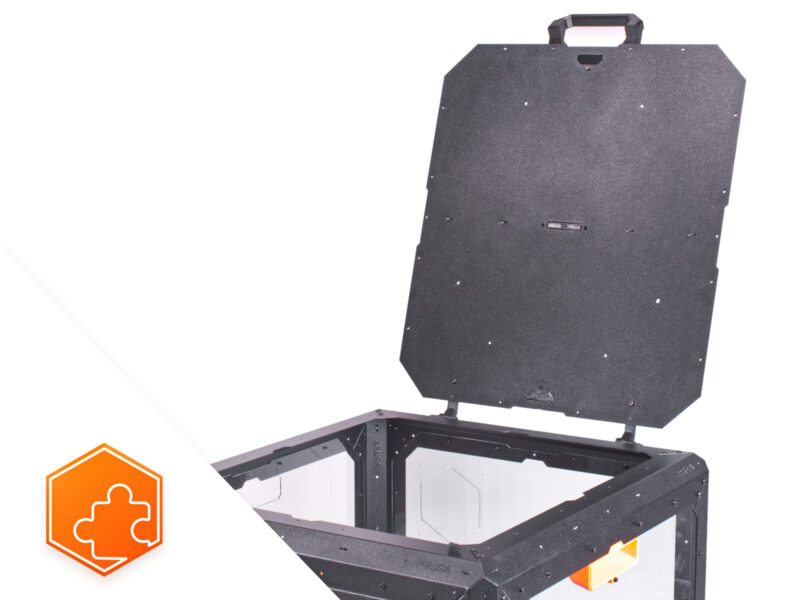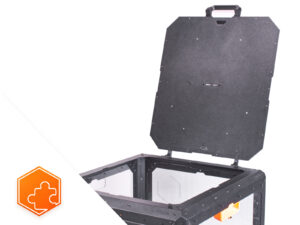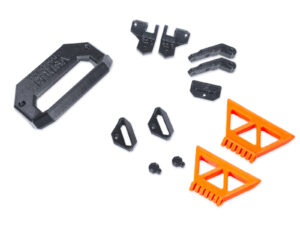English
1. Introduction
Step 1 of 19 (Chapter 11 of 18)
Contents
Comments
⬢This guide will take you through the installation of the Hinged lid on the Original Prusa Enclosure.
⬢
Before you start installing the add-on, PRINT OUT ALL NECESSARY PLASTIC PARTS! The parts are available for download at Printables.com.
All necessary fasteners are already included in the Enclosure kit.



Contents
Original Prusa Enclosure assembly (external display mounting) (v1.03)
- 1. Introduction
- 2A. Preparing the printer (MK4/S & 3.9/S)
- 2B. Preparing the printer (MK3S+ Black PSU)
- 2C. Preparing the printer (MK3S+ Silver PSU)
- 3. Assembling the enclosure
- 4A. Installing the printer (MK4/S & 3.9/S)
- 4B. Installing the printer (MK3S+ Black PSU)
- 4C. Installing the printer (MK3S+ Silver PSU)
- Manual changelog Enclosure kit
- 5. Fire Suppression System (add-on)
- 6. Hinged Lid (add-on)
- Introduction
- Tools necessary for this chapter
- Removing the covers
- Removing the top panel
- Installing the lid hinges: parts preparation
- Assembling the lid hinges
- Assembling the lid hinges
- Installing the lid hinges
- Installing the lid hinges
- Installing the lid hinges
- Installing the top panel
- Installing the covers: parts preparation
- Installing the covers
- Mounting the handle: parts preparation
- Mounting the handle
- Mounting the locks: parts preparation
- Mounting the locks
- Locking the locks
- MMU Installation
- 6A. Hinged Lid with MMU3
- 6B. Hinged lid with MMU2S
- 7. Advanced filtration system (add-on)
- 8. Mechanical lock (add-on)
- 9. Quick release PSU cable - MK3S+ Black PSU (add-on)
- 10. Quick release PSU cable - MK4/3.9 Black PSU (add-on)
- 11. White LED strip (add-on)
Comments
Log in to post a comment
Ogre Ray
•
"NOTE: If you have the Advanced filtration system add-on, DO NOT use the "Hinge R Bracket"- you MUST use the R version ("Hinge Rt Bracket") which has a larger hole for the filtration system thumb screw. (Filtration system users must use "R1 Rt")
rickdgray
•
The gcode provided is for MK3 and trying to run it on my MK4 notifies me that it must run in compatibility mode. As a newbie, I don't know the differences in the models and am unsure if it will still print OK. This should be addressed in the instructions or the gcode should be sliced for MK4 and uploaded.
Balu
•
Please note that there is an special hinge part that allows thumb screws to be used in case you also have the filtration system.